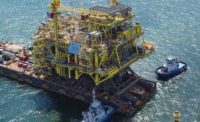Despite Global Oversupply, Baosteel Builds More Capacity

This summer, Shanghai Baosteel Group Corp., China’s largest steel producer, has secured equipment orders and resumed construction activities to complete a new, modernized steel-manufacturing facility in Zhanjiang Province, southwest of Shanghai. While this project will dramatically increase the company's production capacity, some market observers think it will worsen China's massive overproduction and negatively affect global prices, which already are weak.
From a western perspective, the Chinese strategy on steel can be difficult to understand. For instance, customers buy steel from traders in China, not the mills. Last year, traders kept buying even though there was a glut of material on the market. So, the mills kept producing because they had sales.
“In China, they can keep money locked up,” says Becky Hites, managing director at Miller Mathis, New York City, an investment bank for the steel, metals and mining sector. “If they can buy for $400 per ton in February and hold it until October to get $600, they will do it. That’s just not a western philosophy, because we have to pay interest.”
In addition, the motivations for adding capacity are not strictly capitalistic but also political, logistical and environmental.
The Chinese have been shifting production to be closer to markets, primarily along the coast and away from locations near the raw-material sources.
“China’s steel industry has become too big to rely on domestic sources of raw materials and has been one of the biggest importers of iron ore and scrap over the last 10 years,” Hites says. “As the ports got built, the steel industry kind of grew with them. Now, plants want to be closer to the coast.”
Instead of building plants in the “quickest and cheapest” way, there is a move toward modernization, Hites says, explaining the reasoning behind Zhanjiang’s construction.
Capacity Not the Sole Goal
While the added capacity includes upgrading and modernizing to lower cost, it also is designed to lower the pollution that has plagued Chinese cities.
This last issue caused permitting difficulties that stalled the project for several months, but construction now has resumed, Baosteel says. “This is not an incremental addition, and some of Baosteel’s old capacity will be retired as the Zhanjiang facility comes on line,” Hites tells ENR.





